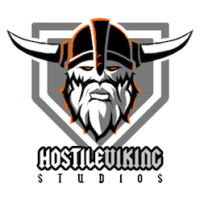I've worked on games that run the gambit from nearly even 1:1 programmer/artist, games that are heavily skewed about 5:1 artists to programmers, and games that are heavily skewed about 5:1 programmers to artists. It all depends on the needs of the game.
Generally there are more sub-disciplines in the art department, each needed at different times. Concept artists, character artists, environment artists, UI artists, modeling and rigging specialties, character animators, generalist animators, etc. Programmers are generally more versatile, but still sub-disciplines of client and server programmers, engine programmers, gameplay programmers, tools programmers, etc.
Then don't forget about leads and management. Good leaders enable their teams to be incredibly productive. They'll figure out the right things in the right order to get best value quickly, and at the same time they'll buffer the ever-shifting requirements and requests so the individual developers can do what they need. They'll talk to each discipline to see what the issues are and work with each other to smooth the rough spots; better tools for an artist here, different art bones there, enabling people to do great things.
The people listed above as "writer" and "sound guy" are important, too. Usually one "sound guy" who is skilled at composition, foley, and effects, can support around 20-50 main developers depending on what they're building. Otherwise you may need multiple people, maybe a short-term composer, maybe another who works with voices if you've got that, another working on environment sounds, another making sure all the button clicks and UI sounds, your explosions sound sound effects, and all the rest make your game sound compelling.
Usually there is a constant battle (in a good way) between producers who have schedules and budgets, designers who have amazing ideas and concepts, and developers who have to implement those ideas.
Then there is QA, often the unsung heroes, who bump into every wall, run every animation on every costume, and struggle to find repro steps to bugs like the server crashing every Thursday around 10:30 AM, which happens to be the first time a player completes a game immediately after the weekly logs were rotated.
It takes all the disciplines.











